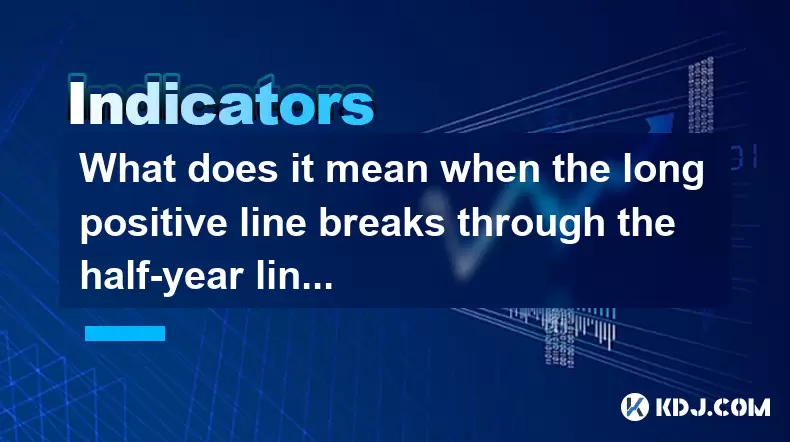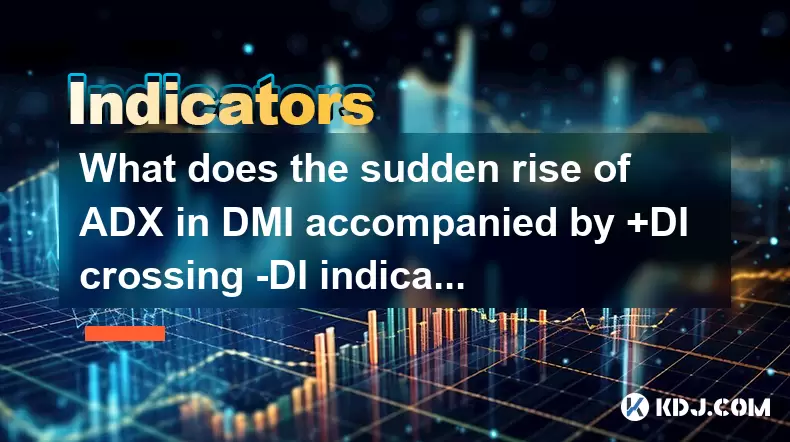-
 Bitcoin
Bitcoin $117500
1.74% -
 Ethereum
Ethereum $3742
2.76% -
 XRP
XRP $3.165
2.67% -
 Tether USDt
Tether USDt $1.000
0.01% -
 BNB
BNB $782.7
2.62% -
 Solana
Solana $186.2
4.21% -
 USDC
USDC $0.9999
0.00% -
 Dogecoin
Dogecoin $0.2375
4.33% -
 TRON
TRON $0.3184
0.92% -
 Cardano
Cardano $0.8208
2.70% -
 Hyperliquid
Hyperliquid $44.48
4.74% -
 Sui
Sui $4.003
9.41% -
 Stellar
Stellar $0.4419
5.99% -
 Chainlink
Chainlink $18.26
4.02% -
 Hedera
Hedera $0.2658
11.93% -
 Bitcoin Cash
Bitcoin Cash $556.3
5.98% -
 Avalanche
Avalanche $24.12
4.02% -
 Litecoin
Litecoin $113.2
1.43% -
 UNUS SED LEO
UNUS SED LEO $8.979
0.15% -
 Shiba Inu
Shiba Inu $0.00001406
5.12% -
 Toncoin
Toncoin $3.324
7.01% -
 Ethena USDe
Ethena USDe $1.001
0.01% -
 Uniswap
Uniswap $10.44
3.81% -
 Polkadot
Polkadot $4.098
3.95% -
 Monero
Monero $325.4
-0.61% -
 Dai
Dai $1.000
0.01% -
 Bitget Token
Bitget Token $4.555
2.84% -
 Pepe
Pepe $0.00001255
4.00% -
 Aave
Aave $297.5
3.63% -
 Cronos
Cronos $0.1327
3.29%
What does it mean when the long positive line breaks through the half-year line and then steps back?
A long green candle breaking above the 180-day SMA signals strong bullish momentum, especially if confirmed by high volume and a successful retest of the moving average as support.
Jul 25, 2025 at 06:49 pm

Understanding the Long Positive Line in Candlestick Charts
In the world of cryptocurrency trading, candlestick patterns play a vital role in technical analysis. A long positive line, also known as a long green candle, represents a significant upward movement in price over a specific time period. This candle forms when the closing price is notably higher than the opening price, indicating strong buying pressure. The length of the body reflects the intensity of bullish momentum. When such a candle appears, traders often interpret it as a sign of confidence in the market direction. However, the context in which this candle appears—particularly its relationship to long-term moving averages like the half-year line (approximately 180-day moving average)—can alter its implications.
What Is the Half-Year Line?
The half-year line refers to the 180-day simple moving average (SMA), a widely used benchmark in technical analysis. It smooths out price data over the past six months, offering insight into the intermediate to long-term trend. When the price of a cryptocurrency is above this line, it generally suggests a bullish trend. Conversely, prices below the line may indicate bearish sentiment. The half-year line acts as both a support and resistance level, depending on market conditions. A break above this line is often seen as a potential bullish signal, especially if accompanied by high trading volume.
Interpreting the Breakthrough of the Half-Year Line
When a long positive candle breaks above the half-year line, it signals a powerful shift in market sentiment. This move suggests that buyers have overcome prolonged selling pressure and are now driving the price into new territory. Key factors to assess include:
- Whether the candle closed well above the half-year line, not just briefly touching it.
- The trading volume during the breakout—high volume adds credibility to the move.
- The prior trend—was the market consolidating, downtrending, or ranging before the breakout?
A genuine breakout implies that institutional or large retail investors may be entering the market. However, not all breakouts lead to sustained upward movement. The subsequent behavior of price—especially the "step back"—is crucial in determining the validity of the breakout.
Why the Price Steps Back After the Breakthrough
After a strong breakout, it's common for the price to pull back or retrace toward the half-year line. This phenomenon, known as a retest, occurs for several reasons: - Profit-taking: Traders who bought earlier may sell to lock in gains.
- Uncertainty: Some market participants remain skeptical and wait for confirmation.
- Liquidity zones: The area near the moving average often contains pending orders and historical price activity.
During the retest, traders closely watch whether the half-year line now acts as support. If the price bounces off this level without closing below it, the breakout is considered confirmed. However, if the price closes below the line after the retest, the breakout may be deemed false, signaling potential weakness.
How to Analyze the Retest Phase
To determine the strength of the breakout and retest, follow these steps: - Monitor the candlestick patterns during the pullback. Look for small-bodied candles or bullish reversal patterns like hammers or bullish engulfing candles.
- Check the volume during the retest. Declining volume on the downside suggests weakening selling pressure.
- Use additional indicators such as RSI or MACD to assess momentum. For example, if RSI remains above 50 during the retest, bullish momentum may still be intact.
- Observe how the price interacts with the 180-day SMA. Does it hover just above, or does it dip below intraday but close above?
A successful retest often leads to renewed buying interest, especially if other technical elements align, such as rising volume on upward moves or positive divergence on oscillators.
Practical Steps for Traders
For traders analyzing this pattern, here is a detailed approach: - Identify the long green candle on the daily chart that closes above the 180-day SMA.
- Confirm the moving average is correctly plotted—ensure your charting platform uses the 180-day SMA and not an exponential version unless intended.
- Wait for the pullback phase to begin. Avoid entering immediately after the breakout to prevent false signals.
- Set a buy order slightly above the retest low, with a stop-loss placed below the half-year line.
- Use position sizing to manage risk—allocate only a portion of capital based on your risk tolerance.
- Track market news and on-chain data to rule out external factors influencing the price movement.
This method allows traders to enter with a favorable risk-reward ratio while confirming the sustainability of the breakout.
Common Misinterpretations and Pitfalls
Many traders misread this pattern due to premature conclusions. A long green candle breaking the half-year line does not guarantee a bull run. Key mistakes include: - Ignoring volume confirmation—a breakout on low volume is less reliable.
- Failing to wait for the retest, leading to entries during overextended moves.
- Overlooking broader market conditions, such as Bitcoin’s trend or macroeconomic factors affecting crypto.
- Confusing the half-year line with shorter moving averages like the 50-day or 200-day SMA, which have different implications.
Avoiding these errors requires patience and a structured analysis framework.
Frequently Asked Questions
Q: Can the half-year line be used on timeframes other than daily charts?
Yes, the 180-day moving average is primarily used on daily charts. On hourly or 4-hour charts, the equivalent would require recalculating the number of periods, but the interpretation loses relevance due to the mismatch with the "half-year" context.Q: What if the long green candle breaks the half-year line but the next candle is red?
A red candle immediately after does not invalidate the breakout. Focus on whether the price remains above the 180-day SMA. A small pullback candle is normal. Only concern arises if the red candle closes significantly below the line.Q: How do I plot the 180-day SMA on popular trading platforms like TradingView?
On TradingView, click "Indicators," search for "Simple Moving Average," set the length to 180, and apply it to the price chart. Ensure the symbol’s data history covers at least 180 days for accuracy.Q: Does this pattern work the same across all cryptocurrencies?
The pattern’s reliability varies. It tends to be more effective on high-market-cap assets like Bitcoin or Ethereum due to stronger liquidity and participation. Low-cap altcoins may exhibit false breakouts more frequently due to manipulation or low volume.
Disclaimer:info@kdj.com
The information provided is not trading advice. kdj.com does not assume any responsibility for any investments made based on the information provided in this article. Cryptocurrencies are highly volatile and it is highly recommended that you invest with caution after thorough research!
If you believe that the content used on this website infringes your copyright, please contact us immediately (info@kdj.com) and we will delete it promptly.
- UAE's Digital Asset Revolution: Stablecoin Regulations Take Center Stage
- 2025-07-26 10:40:11
- VIRTUAL Weekly Drop: Recovery Analysis and Privacy Push
- 2025-07-26 08:50:11
- Bitcoin, Cynthia Lummis, and Freedom Money: A New Yorker's Take
- 2025-07-26 08:30:11
- Pudgy Penguins, Crypto Prices, and the Altseason Buzz: What's the Hype?
- 2025-07-26 10:51:48
- Crypto Gainers, Top 10, Week 30: Altcoins Buck the Trend
- 2025-07-26 08:55:12
- Solana, Altcoins, and Coinbase: What's the Buzz?
- 2025-07-26 06:30:12
Related knowledge

What does it mean that the rebound is blocked after the moving average is arranged in a short position for the first time?
Jul 26,2025 at 10:51am
Understanding the Short-Term Moving Average ConfigurationWhen traders refer to a 'short position arrangement' in moving averages, they are describing ...

What does it mean when the price rises along the 5-day moving average for five consecutive days?
Jul 26,2025 at 08:07am
Understanding the 5-Day Moving Average in Cryptocurrency TradingThe 5-day moving average (5DMA) is a widely used technical indicator in cryptocurrency...

What does it mean when the price breaks through the 60-day moving average with a large volume but shrinks the next day?
Jul 26,2025 at 06:01am
Understanding the 60-Day Moving Average in Cryptocurrency TradingThe 60-day moving average (60DMA) is a widely used technical indicator in the cryptoc...

What does the sudden rise of ADX in DMI accompanied by +DI crossing -DI indicate?
Jul 26,2025 at 01:21pm
Understanding the DMI and Its Core ComponentsThe Directional Movement Index (DMI) is a technical analysis tool used to determine the presence and stre...

What does it mean when OBV continues to hit new highs but the price is stagnant?
Jul 26,2025 at 09:57am
Understanding the On-Balance Volume (OBV) IndicatorThe On-Balance Volume (OBV) is a technical analysis indicator that uses volume flow to predict chan...

What does the golden cross of EMA12 and EMA26 but the low trading volume reflect?
Jul 26,2025 at 06:44am
Understanding the Golden Cross in EMA12 and EMA26The golden cross is a widely recognized technical indicator in the cryptocurrency market, signaling a...

What does it mean that the rebound is blocked after the moving average is arranged in a short position for the first time?
Jul 26,2025 at 10:51am
Understanding the Short-Term Moving Average ConfigurationWhen traders refer to a 'short position arrangement' in moving averages, they are describing ...

What does it mean when the price rises along the 5-day moving average for five consecutive days?
Jul 26,2025 at 08:07am
Understanding the 5-Day Moving Average in Cryptocurrency TradingThe 5-day moving average (5DMA) is a widely used technical indicator in cryptocurrency...

What does it mean when the price breaks through the 60-day moving average with a large volume but shrinks the next day?
Jul 26,2025 at 06:01am
Understanding the 60-Day Moving Average in Cryptocurrency TradingThe 60-day moving average (60DMA) is a widely used technical indicator in the cryptoc...

What does the sudden rise of ADX in DMI accompanied by +DI crossing -DI indicate?
Jul 26,2025 at 01:21pm
Understanding the DMI and Its Core ComponentsThe Directional Movement Index (DMI) is a technical analysis tool used to determine the presence and stre...

What does it mean when OBV continues to hit new highs but the price is stagnant?
Jul 26,2025 at 09:57am
Understanding the On-Balance Volume (OBV) IndicatorThe On-Balance Volume (OBV) is a technical analysis indicator that uses volume flow to predict chan...

What does the golden cross of EMA12 and EMA26 but the low trading volume reflect?
Jul 26,2025 at 06:44am
Understanding the Golden Cross in EMA12 and EMA26The golden cross is a widely recognized technical indicator in the cryptocurrency market, signaling a...
See all articles

























































































